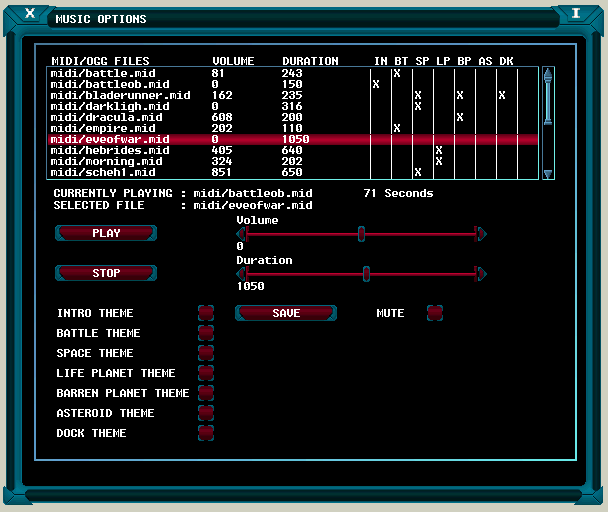The application has been designed to allow the user to import 3rd party music and to indicate at which point a desired theme should be played during the game. The following formats are supported:- Midi Files : These are files that contain a set of instructions for a computer or synthesizer to play. They do not contain actual sounds, but information on how to make the sounds instead. The files are typically compact and rarely exceed a few hundred kilobytes. The major drawback of this format is that their playback can vary depending on the device that is used to read them. Music in the form of an ‘ogg’ file should be copied into the ‘ogg’ directory, whilst ‘midi’ files should be copied into the ‘midi’ directory as shown in the diagram above. These files will then be automatically picked up when the application boots.
|
|||
To configure the games music the user should enter the ‘music options’ screen found under the main options menu structure. At the top of the window lies a scrolling list of all the midi files that the application has found within the ‘midi’ directory. The volume, duration and music’s themes are also displayed. Below this list, the file that is currently playing is displayed together with an indication of how long it has been playing for. By clicking on a file in the list area of the window the user can adjust its configuration. The Table below describes the available options. |
|||
 |
|||
